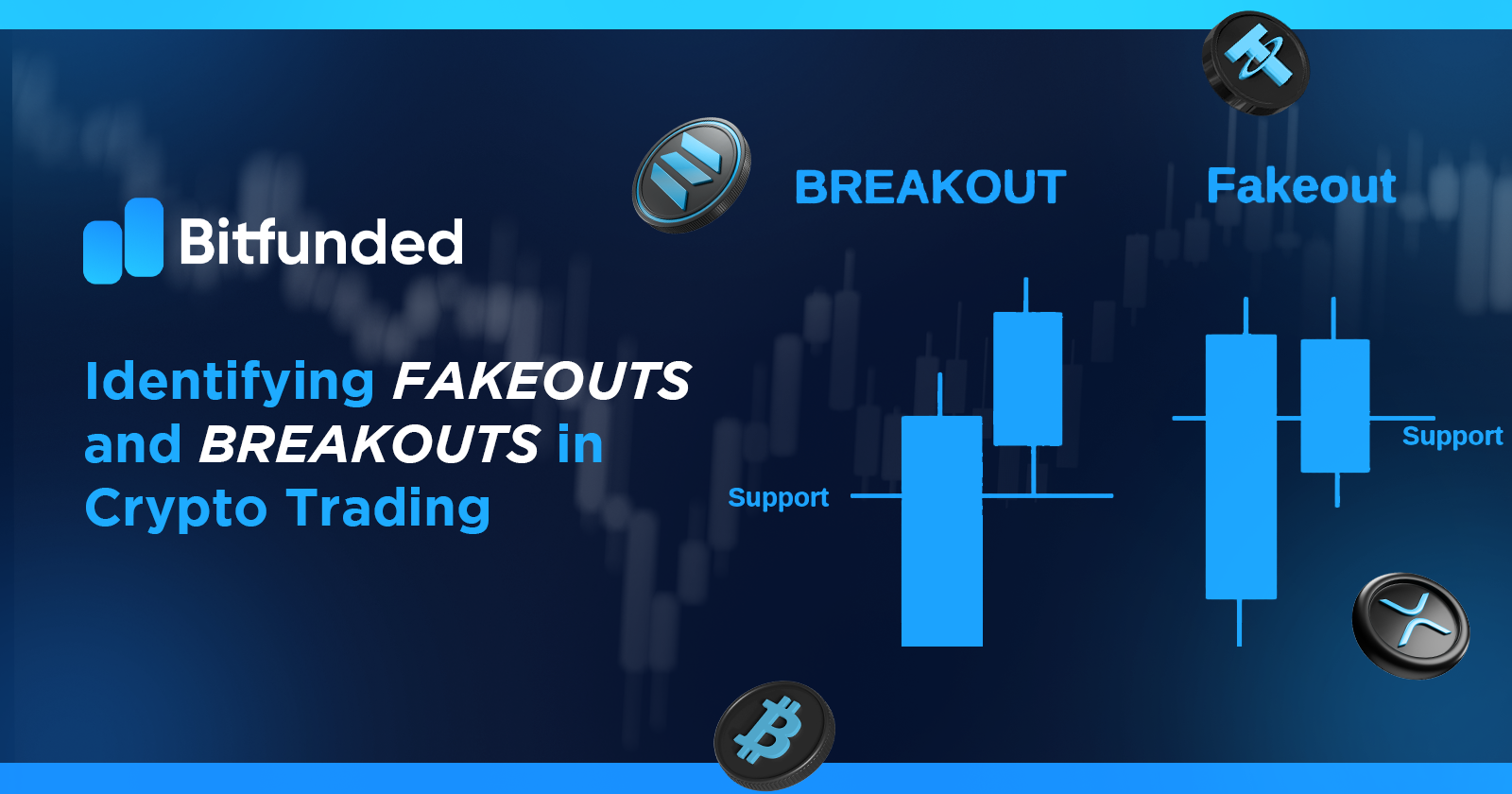Crypto trading delivers wild experiences because traders often miss out on lucrative breakouts through deceptive fakeouts which eliminate their gains.
The guide will explain how to identify authentic price breakouts and identify fraudulent deceptive moves as well as introduce straightforward protection techniques for integrating into the fast-paced cryptocurrency market.
What’s a Breakout in Crypto Trading? The Moment of Opportunity
While following Bitcoin or Ethereum price movements you see the coin trapped in its price range between lower and upper barriers labeled as support and resistance. A strong price movement shatters resistance barriers as if an athlete struggles past the competition in the final stretch of a race.
In breakout events the price breaches important levels during trading which typically marks the beginning of fresh market directions.
- Market indicator hints at upward price movement when the price moves higher than resistance. The market declares this moment as a sign that it wants to rally by overcoming resistance.
- Price moves beneath support to signal the beginning of a negative market direction. The market sends this warning as part of its natural process to predict impending challenges.
What Makes a Breakout Legit?
Not every breakout is the real deal, but there are telltale signs to look for:
- Volume Speaks Volumes: A true breakout often comes with a spike in trading volume.
- Candle Confirmation: A strong candle closing beyond the level (not just touching it) is like a green light.
- The Retest Dance: After breaking out, the price often comes back to “touch” the level it broke, now acting as support (or resistance in a bearish move). If it holds, that’s your confirmation to trust the trend.
What’s a Fakeout? The Market’s Trickster Move
Let’s talk about the fakeout, the market’s way of playing a cruel joke. A fakeout happens when the price teases you by briefly crossing a support or resistance level, only to snap back in the other direction. It’s like the market saying, “Gotcha!” while you’re left holding a losing position.
How to Spot a Fakeout Before It Bites
- Volume Check: If volume is weak or dropping during the “breakout,” it’s a red flag. A real move needs the crowd’s energy.
- Price Behavior: If the price can’t stay above (or below) the level and reverses quickly, within a few candles, it’s likely a fakeout.
- Quick Reversals: A sudden U-turn after the breakout, especially with no follow-through, is the market laughing at your early entry.
Practical Tips to Trade Breakouts and Dodge Fakeouts
Here’s how you can protect yourself and trade with more confidence. These are the lessons I wish I’d known when I started:
- Volume Is Your Best Friend
A breakout without volume is like a party with no guests, it’s not going anywhere. Always check for a volume surge to confirm the move. On platforms like TradingView, you can see volume bars spike when a breakout is real. - Patience Pays Off: Wait for the Candle Close
I used to jump in the second a price crossed a level, but I’ve learned to wait. Let a full candle (like a 1-hour or 4-hour, depending on your style) close beyond the level before you act. It’s like waiting for a friend to confirm they’re actually showing up before you head to the meeting spot. - Look for the Retest Confirmation
After a breakout, the price often comes back to test the level it broke, like double-checking the door is locked before leaving. If that level holds as support (or resistance), it’s a sign the breakout has legs. I’ve found this especially helpful in crypto, where volatility can make things tricky. - Add Indicators for Extra Confidence
Indicators are like your trusty sidekick, they help you see the bigger picture:- Relative Strength Index (RSI): If RSI is overbought (above 70) during an upward breakout, it might be a fakeout waiting to happen. Same goes for oversold (below 30) in a downward move.
- Moving Averages: A breakout above a key moving average, like the 50-day MA, adds credibility. I often use the 200-day MA as a “big picture” guide.
- Bollinger Bands: If the price breaks outside the bands with strong momentum, it’s a good sign of a real move.
- Protect Yourself with Stop-Losses
Crypto can be brutal, so always set a stop-loss. For a long trade, place it just below the support level; for a short, just above resistance. It’s like wearing a seatbelt—you hope you don’t need it, but it’s there if things go wrong. I’ve saved myself from big losses this way more times than I can count.
Why This Matters in Crypto Trading
Fakeouts and breakouts are part of the crypto trading game, but they don’t have to be your downfall. I’ve had my share of wins and losses, celebrating when I caught a Bitcoin breakout that soared 20%, and kicking myself when I fell for a fakeout that cost me a chunk of my account. Patience, confirmation, and a little skepticism go a long way. By focusing on volume, waiting for retests, and using indicators, you can tilt the odds in your favor.
For those of us trading with Bitfunded, mastering these skills is even more critical. The Crypto Proprietary Trading Challenge (CPTC) is all about proving you can trade smart and manage risk. Spotting real breakouts while avoiding fakeouts can help you pass the challenge and unlock the chance to trade with significant simulated capital.

